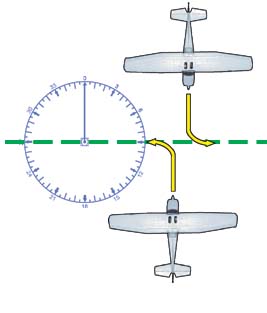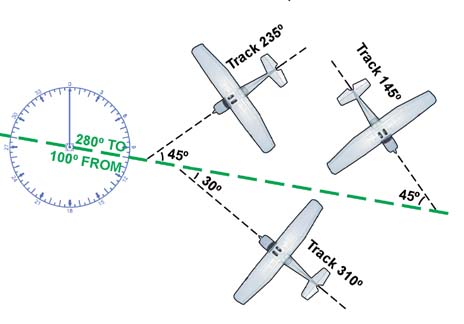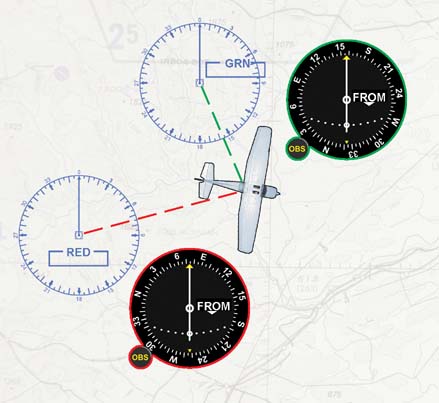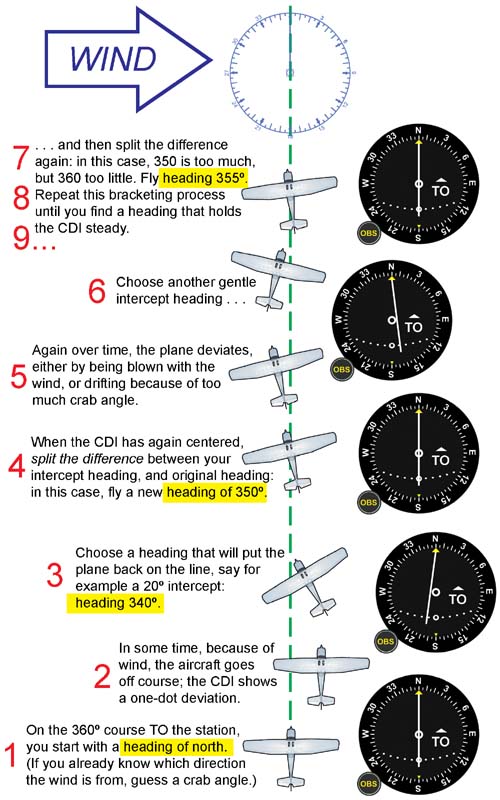|
The most rapid way to get on to a distant radial would
be to fly perpendicular, straight to it: a 90º intercept.
To intercept a 270º TO course from the south, fly direct
north until the needle centers. To intercept that same line (which
would also be the 90º FROM radial) from the north, fly directly
south.

|
Usually, though, you'll want to intercept a course at a shallower
angle, because that cuts down the total distance and time to
your destination. 30º or 45º are good intercept angles,
but any angle will do and the math is always the same: take the
magnetic course of the line that you're trying to get on. Then,
if you're intercepting from the right side of the line, add the
intercept angle. If you're intercepting from the left of the
line, subtract the intercept angle.

Example: You're trying to intercept the 280º
course (TO the station) from south of that line. You choose a
30º intercept. Fly a track of (280º + 30º) = 310º.
If you are trying to intercept that same line from the north
side, on a 45º intercept, fly a track of (280º - 45º)
= 235º. If you were going to fly FROM on that same line,
it's the 100º radial. To intercept at a 45º angle from
the north, you're now on the left side of the line, so fly (100º
+ 45º) = 145º. Note that the track is not necessarily
the heading: you'll have to crab for wind in order to intercept
correctly. |







